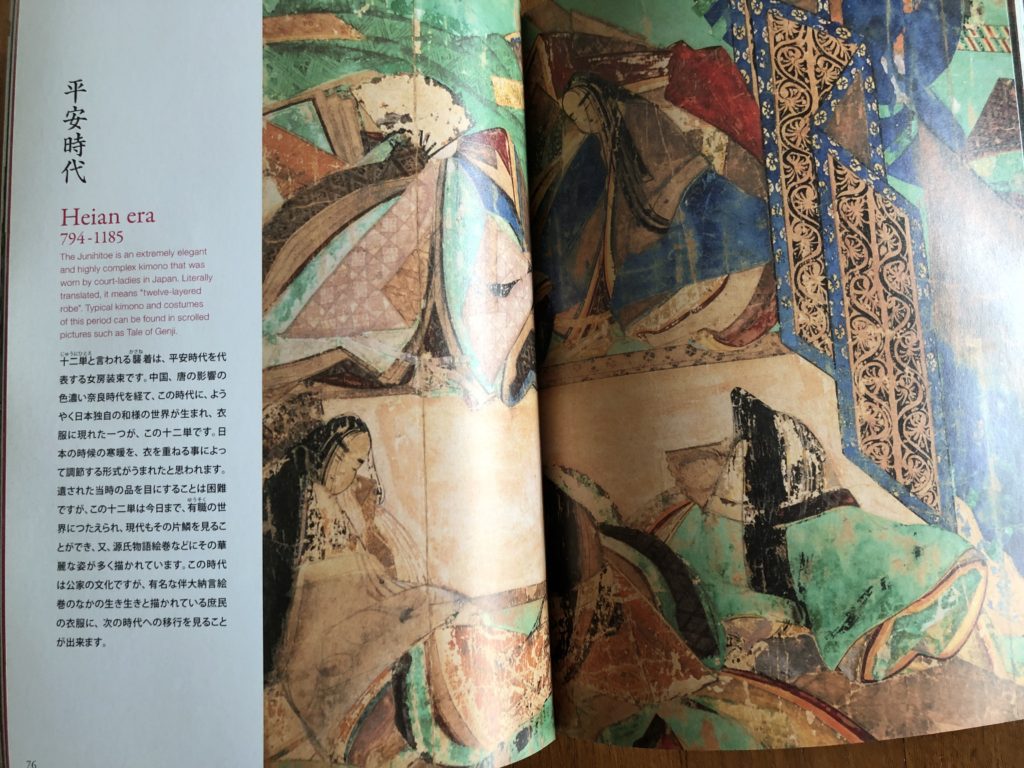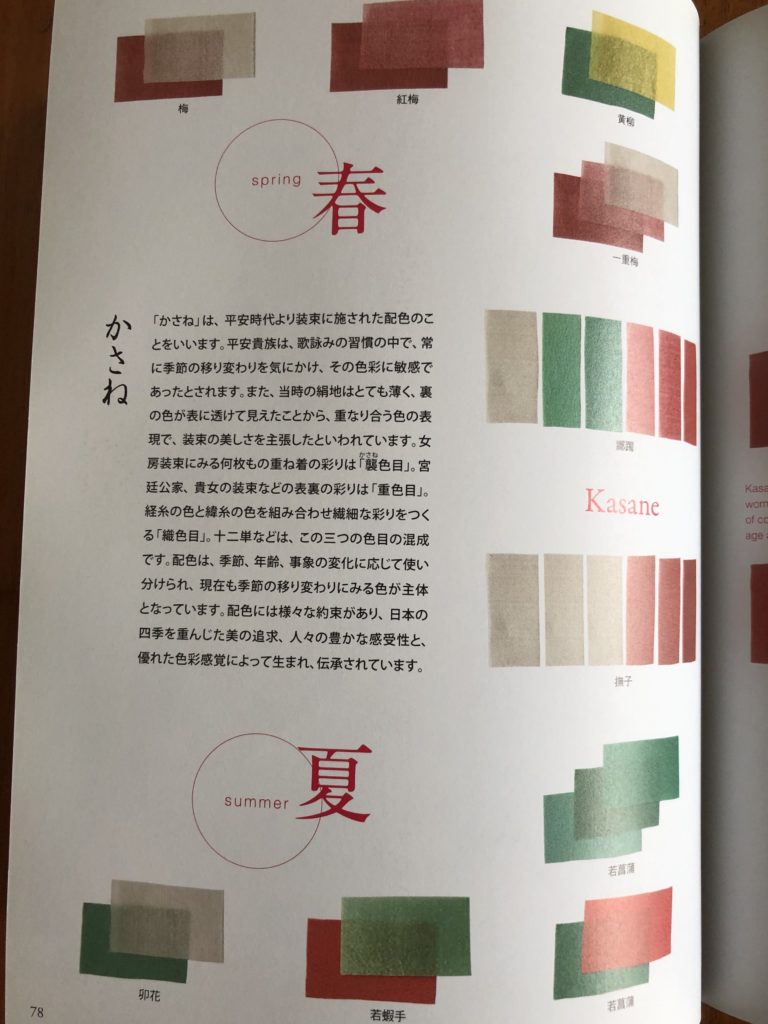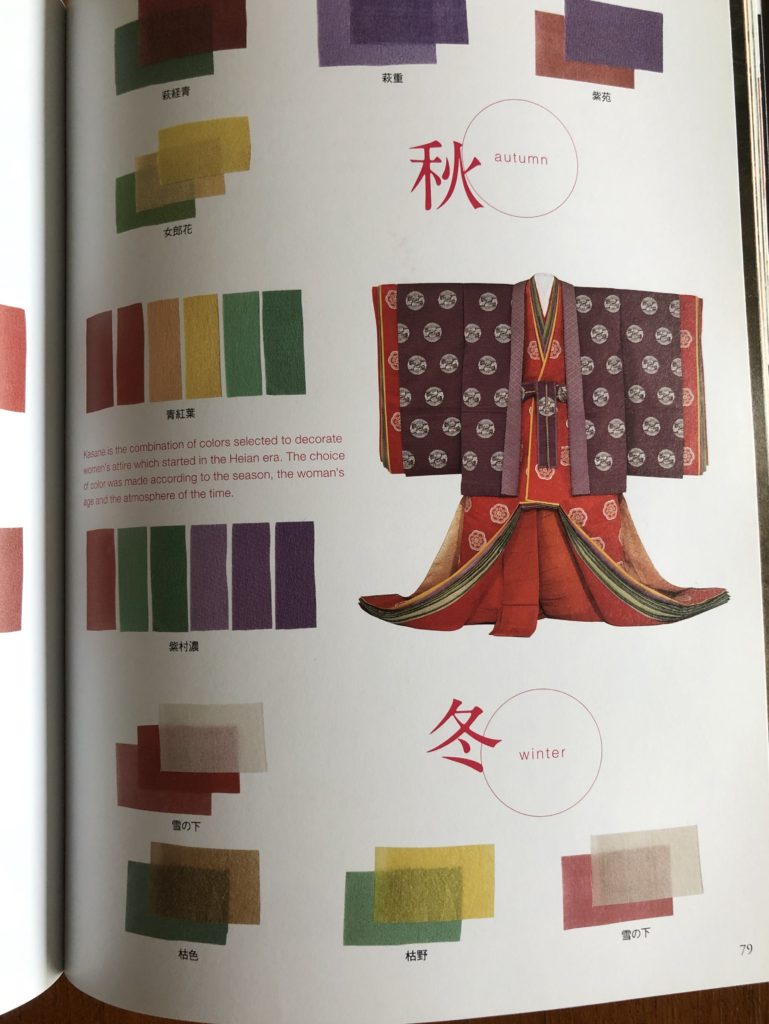As part of my research into the world of Genji, I decided to read up about the history of Kimono. Unfortunately, most library books are for reference, so I borrowed the only one that wasn’t – The Kimono: History and Style.
This book is a very beautiful book that takes a pictorial look at the history and modern uses for kimono. It’s in English and Japanese, and while the English translations are quite accurate, they don’t have nearly as much information as the Japanese text. As the title says, this book looks at the history and style of the kimono – the introduction covers the history, section one is about occasions where the kimono is worn, and section two is about the history of the kimono from the Heian era till today.
I was most interested in the history of the Kimono during the Heian era, but I did learn a few other interesting facts, such as:
- The modern kimono starts from the Kamakura era (1185 – 1333), where the kosode, which was originally an undergarment, came to be worn as an overgarment. The uchikake also came about during this era.
- During the Meiji era (1868- 1912), the kimono started to get westernised as technology from abroad came into the country and industrialisation happened. The book puts the westernisation this way: school girls in hakamas, wearing shoes and riding a bicycle. Other examples: “air cut to shoulder length with tall geta”, “wearing Western dress under a crested haori” and “wearing a Japanese sword with Western dress.”
- This westernisation continued in the Taisho era (1912-1926), as kimono designs are influenced by art nouveau.
- Not really a fact, but in the kimono in film section, pictures of Star Wars is included.
Now, as to what I’ve learnt about the kimono in the Heian era:
- To start a little bit before, before the Heian era, the influence of Tang-dynasty China was very great and the Japanese ‘imported’ a lot of things like a high collar for court dress (for men). The length of the sleeves was also an indication of status.
- But when you get into the Heian era, Japan has closed itself up and started developing their own culture, resulting in clothing such as the Junihitoe (十二単) for women. The layers were apparently very thin which means that you could layer them to suit the weather at the time (or so people think).

- In the hyper-refined culture of the Heian-era, layering involved paying attention to the season, your age, and a bunch of other things to choose the correct colours. Also, these are clothes that apparently look most beautiful when you sit properly and very still.
- At galas, ladies could wear up fifteen or sixteen layers.
- As you can guess, the combination of colours is very important. And this is the part where I’m having a bit of trouble. The book mentions three types of 色目 (irome) aka the coloured patterns:
- 「襲色目」:女房装束に見る何枚も重ね着の彩り The colours worn by the ladies of the royal court/ladies serving in the royal court – For this one, web sources seem to indicate that it’s about the colours from layering (bolding the common phrase used). If you want to see examples, you can look at this page.
- 「重色目」:宮廷公家、貴女の装束などの表裏の彩り The “front and back” (literal translation) colours worn by the royal family, etc. – The definition I found for this didn’t mention the royal family, but it agrees that this is about the “front and back”, which I’m guessing means the colours that show through the layered cloth? At any rate, the page I linked too has a lot of examples of the colours for each season.
- 「織色目」:経糸の色と緯糸の色を組み合わせ繊細な彩り The delicate colours made by putting a horizontal and vertical thread (aka weaving with two differently coloured threads) – the internet has the same definition for this one and you can see this page for some colours.


Very interestingly, when I was googling for more explanation about irome, the websites I found didn’t differentiate between who wore what. I inititally thought that the different terms were for different ranks of the court (this is what happens when you study Economics instead of Japanese literature or history) but it’s possible that the book used different terms for the same group of people – I’ll definitely have to look more into this/ask my Japanese friends.
Overall, this was a very interesting book. It has a lot of information – more than just about kimonos in Heian era. I liked that it had a lot of photos and images because kimonos are a very visual thing and it helps to see what they’re all about. I think this is more valuable if you can speak Japanese because there is a lot more information in the Japanese text. But even if you don’t, the English text does cover the basics and the images are definitely worth it.
